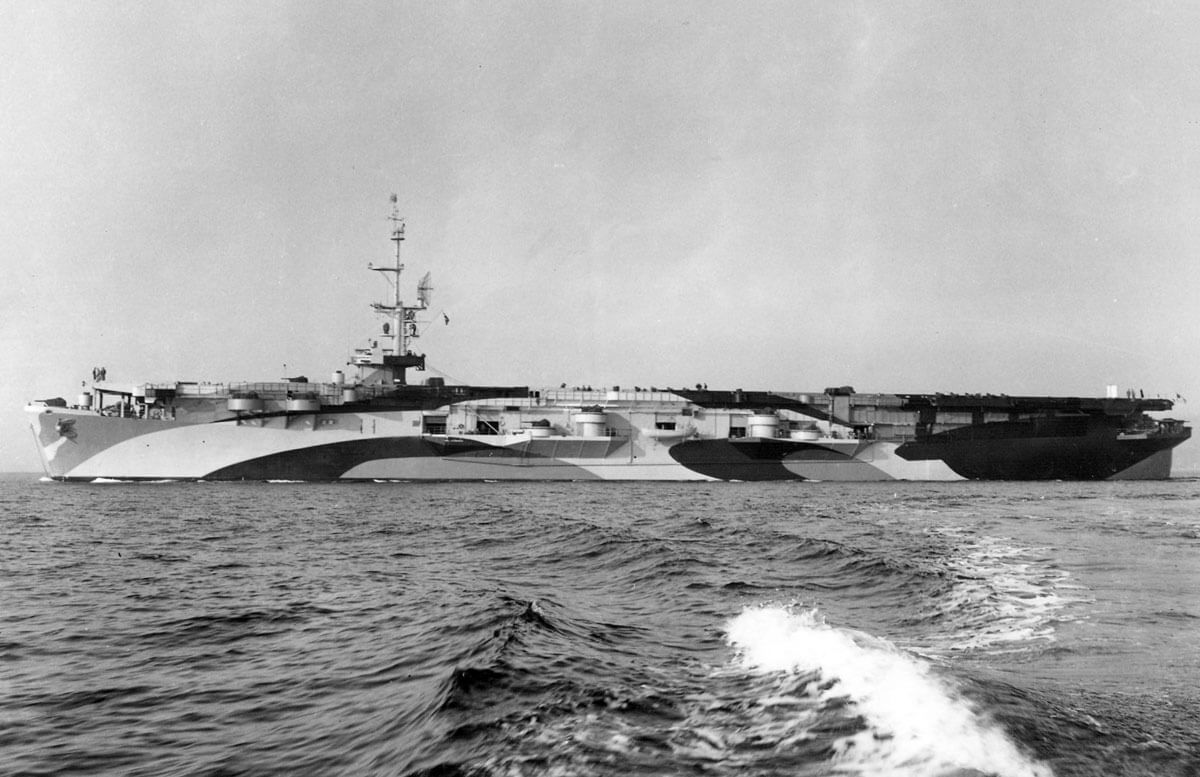Commencement Bay-Class Escort Carriers

Commencement Bay-class escort carriers were the last escort carriers commissioned by the U.S. Navy during WWII. The best and most durable of all the escort carrier classes, these ships had the strength and armament necessary for sustained combat. Only a very few, however, actually saw wartime action.
History of the Commencement Bay-Class
The United States Navy commissioned the Commencement Bay-class escort carriers at a rather late stage of WWII, in 1944. Given the timing, the Navy was able to select the best escort carrier to date, the Sangamon class, and improve upon its design to create the new class. Unlike earlier carrier classes, Commencement Bay-class escort carriers were intended to withstand real combat in addition to performing their escort and transport duties.
To that end, they had greater structural strength and separated engine rooms, which reduced vulnerability to attack. They also had more powerful catapults and larger hangars. They were built from the keel up as carriers, unlike earlier escort carriers that had been converted to a carrier design mid-construction.
Because the war ended soon after their commission, only 19 (out of the projected 35) Commencement Bay-class escort carriers were actually completed. Of those, only three saw service in war: the USS Block Island, the USS Cape Gloucester, and the USS Gilbert Islands. All three of these served off of Okinawa and none were lost in service.
After the war some Commencement Bay-class escort carriers were used to transport aircraft and taken in and out of reserve as required, but most were discarded by 1970. Two ships, however, were brought back into full service during the Korean War. They were modified to remove all armament, and served only as transport vessels. Although the Navy no longer operated these ships, they served civilian crews under the Military Sea Transport Service.
Technical Specifications
Many military experts consider Commencement Bay-class escort carriers to be the best of the WWII carriers. Key specs included:
- 557 feet in length
- 10,975 tons displacement
- Complement of up to ~1,000 men
- More extensive armament than previous carriers: (2) 5/38 Dual-Purpose Guns; (36) 40mm AA guns; (20) 20 mm AA guns
- Air complement of two squadrons and 34 aircraft, often Avenger torpedo bombers or Hellcat fighters
- Maximum speed of 19 knots
- 16,000 hp (more powerful than previous carriers)
- Powered by 2-shaft Allis-Chalmers geared turbine and (4) boilers
Commencement-Bay Escort Carriers and Asbestos Exposure
In the run-up to World War II, the U.S. Navy and the U.S. Maritime Commission determined that asbestos and asbestos-containing products were critically important to the naval and merchant fleets. Asbestos-containing materials were lightweight and thus increased ships’ speed, were excellent insulators, and protected against fire, which was potentially devastating to seagoing vessels.
Commencement Bay-class escort carriers and other U.S. naval vessels built during the World War II era had hundreds of asbestos-containing products. Asbestos was found in pumps and valves, electrical components, galley equipment, washers, deck winches, pipe lagging, heating and communication systems, boilers, turbines, condensers, evaporators, and many more types of machinery and equipment.
Veterans who served onboard Navy vessels and worked in Navy shipyards were exposed to asbestos when they maintained, repaired, replaced, and overhauled asbestos-containing ship components. Years later, many veterans have been diagnosed with mesothelioma, an insidious and incurable cancer that attacks the membranous lining of the lungs and abdomen.
The companies that provided the Navy with asbestos failed to warn about the material’s health risks. These companies alone are liable for veterans developing asbestos diseases like mesothelioma, lung cancer, and asbestosis.
Belluck & Fox, LLP are among the nation’s most experienced and successful asbestos attorneys. We obtain documents such as blueprints and orders that link mesothelioma to specific products used onboard Navy ships. We’ve obtained significant compensation for Navy veterans and can help you and your family, too.
Learn how Belluck & Fox, LLP helps Navy veterans with asbestos disease during a free case review.
Sources:
- The Pacific War Online Encyclopedia: Commencement Bay-Class, U.S. Escort Carriers
- UBoat.net: Commencement Bay-Class
- UBoat.net: American Escort Carrier Development: The Atlantic CVEs
- Microworks: Commencement Bay-Class
- GlobalSecurity.org: CVE-105 Commencement Bay
